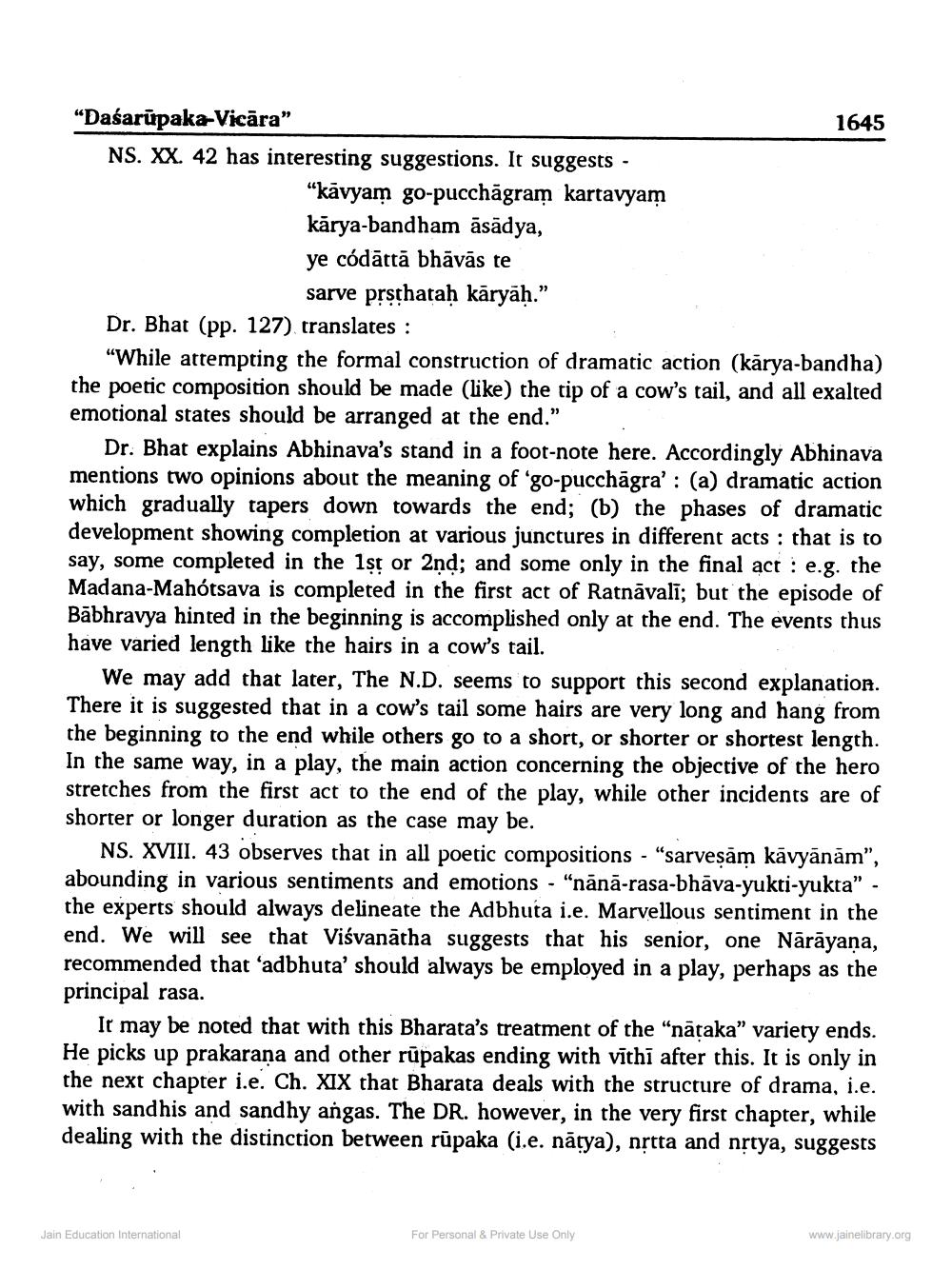________________
“Dasarūpaka-Vicāra"
1645 NS. XX. 42 has interesting suggestions. It suggests -
“kāvyam go-pucchāgram kartavyam kārya-bandham āsadya, ye códātrā bhāvās te
sarve prsthataḥ kāryāḥ.” Dr. Bhat (pp. 127) translates :
"While attempting the formal construction of dramatic action (kārya-bandha) the poetic composition should be made (like) the tip of a cow's tail, and all exalted emotional states should be arranged at the end.”
Dr. Bhat explains Abhinava's stand in a foot-note here. Accordingly Abhinava mentions two opinions about the meaning of 'go-pucchāgra': (a) dramatic action which gradually tapers down towards the end; (b) the phases of dramatic development showing completion at various junctures in different acts : that is to say, some completed in the 1st or 2nd; and some only in the final act : e.g. the Madana-Mahotsava is completed in the first act of Ratnāvalī; but the episode of Bābhravya hinted in the beginning is accomplished only at the end. The events thus have varied length like the hairs in a cow's tail.
We may add that later, The N.D. seems to support this second explanation. There it is suggested that in a cow's tail some hairs are very long and hang from the beginning to the end while others go to a short, or shorter or shortest length. In the same way, in a play, the main action concerning the objective of the hero stretches from the first act to the end of the play, while other incidents are of shorter or longer duration as the case may be.
NS. XVIII. 43 observes that in all poetic compositions - "sarveşām kāvyānām”, abounding in various sentiments and emotions - "nānā-rasa-bhāva-yukri-yukta" - the experts should always delineate the Adbhuta i.e. Marvellous sentiment in the end. We will see that Viśvanātha suggests that his senior, one Nārāyana, recommended that 'adbhuta' should always be employed in a play, perhaps as the principal rasa.
It may be noted that with this Bharata's treatment of the "nataka” variety ends. He picks up prakarana and other rūpakas ending with vīthi after this. It is only in the next chapter i.e. Ch. XIX that Bharata deals with the structure of drama, i.e. with sandhis and sandhy angas. The DR. however, in the very first chapter, while dealing with the distinction between rūpaka (i.e. nārya), nrtta and nrtya, suggests
Jain Education International
For Personal & Private Use Only
www.jainelibrary.org




